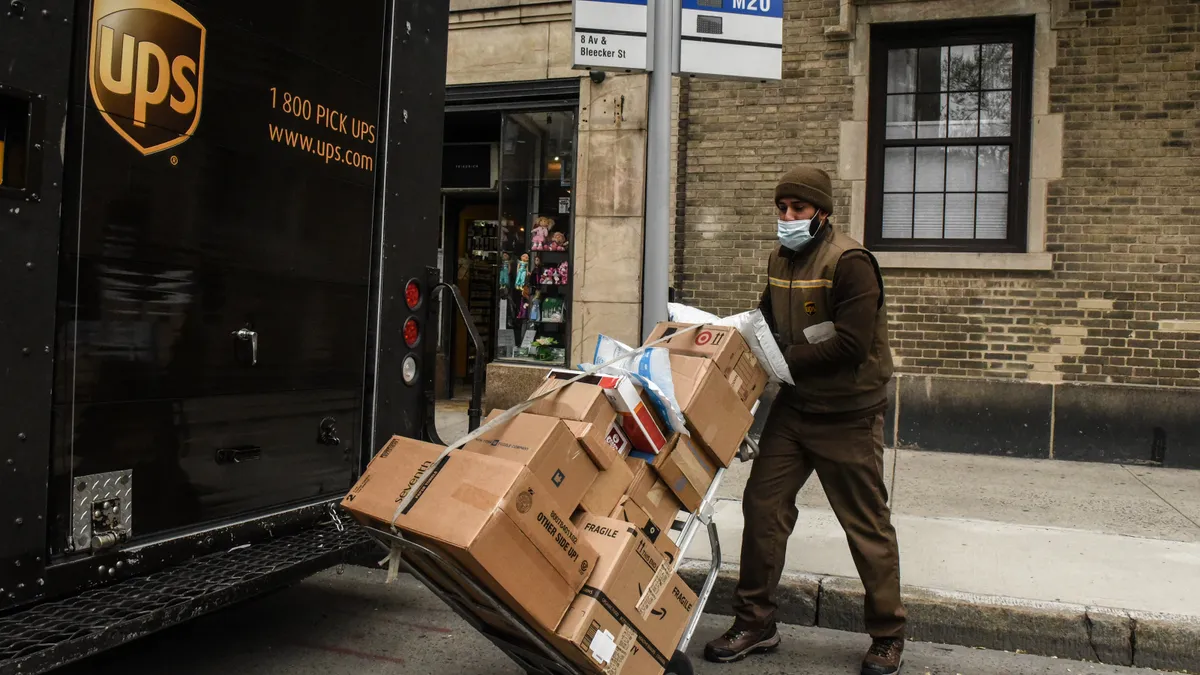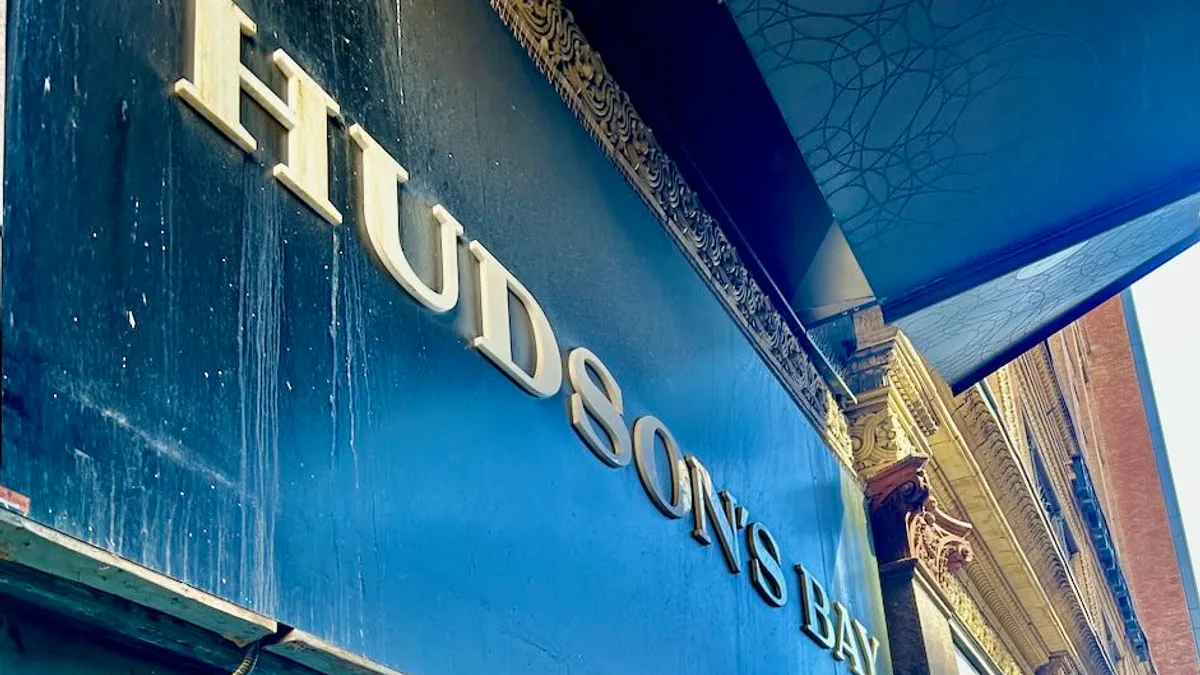UPS plans to further reduce its business with top customer Amazon in 2023, even as both companies face obstacles that could complicate their mutually agreed cutback.
Amazon is shifting away from UPS and other carriers as it works to build its own logistics empire, in part to gain greater control over transit times and the end-customer's delivery experience. Meanwhile, UPS has chased growth in segments outside of e-commerce in order to boost its profit margins.
Estimates from MWPVL International, a firm tracking Amazon's growth, demonstrates the impact of both companies' respective evolutions. The number of Amazon packages UPS handled in 2022 was 1.3 billion, down from 1.41 billion the year before.
"We're just starting to see a slight decline in the absolute package volume," Marc Wulfraat, MWPVL president and founder, said. "Prior to that it was always growing, because the total volume of packages was growing … Now Amazon's got such a large scope of coverage that they can do [it] themselves.”
Amazon-related revenue falls as UPS refocuses
UPS' revenue tied to Amazon fell from 13.3% in 2020 to 11.3% in 2022, according to a UPS securities filing. Cowen analysts said in a January note that the 2022 percentage would have been lower, barring a $1.3-billion currency impact from a strong U.S. dollar.
Although Amazon-related revenue jumped in 2020 as the e-commerce giant scrambled to meet demand at the start of the COVID-19 pandemic, it declined over the following two years as UPS began to focus on attracting more profitable deliveries from healthcare companies and smaller shippers.
Share of UPS revenue tied to Amazon shrinks
"We look favorably on their ongoing efforts to manage down the percent of low margin B2C business that they are willing to take," Cowen analysts said of UPS' efforts to reduce its share of Amazon-related revenue.
The decline in Amazon business is affecting more than just revenue. In Q4, UPS' average daily U.S. domestic volume fell 3.8% YoY, with about half of that drop coming from Amazon, CFO Brian Newman said on a Jan. 31 earnings call. The companies planned for that decline through a previously arranged contractual agreement, he added.
UPS expects the volume decline in its U.S. segment to continue this year, fueled by Amazon insourcing more of its own deliveries, Newman said. He noted that growth from other customers will nearly offset the drop.
"We'll continue on a mutually agreed path to glide that business down in 2023," Newman said of Amazon.
A reduction in the amount of business UPS does with Amazon isn't necessarily a bad thing for the carrier, since it's a prepared decline as opposed to an unexpected drop, LPF Spend Management founder Nate Skiver said in a LinkedIn post. He added that UPS can recapture lost revenue with fewer packages by leaning on higher-yielding shipments from smaller businesses.
Amazon builds a network to rival UPS
While UPS' priorities have shifted, Amazon's capabilities have transformed.
The e-commerce giant leverages UPS in instances where capacity constraints limit its ability to move packages itself, Wulfraat said. The company also needs UPS to deliver in areas where Amazon's sprawling network of logistics facilities hasn't yet reached.
"There's no fulfillment center or sortation center or delivery station operated by Amazon anywhere close to Billings, Montana," Wulfraat said. "So let's say the order that you're placing happens to be coming from the Phoenix fulfillment center. The only way that Amazon can get that merchandise to the customer in two days is to leverage the resources of UPS."
Still, Amazon's aggressive buildout of sortation centers, delivery stations and transportation infrastructure has allowed it to deliver significantly more parcels in-house overall. The company's market share for U.S. parcel volumes grew to 22% in 2021, beating out UPS rival FedEx, according to the Pitney Bowes Parcel Shipping Index.
Amazon's market share grows to rival top carriers
"We took a fulfillment center footprint that we've built over 25 years and doubled it in just a couple of years," Amazon President and CEO Andy Jassy said on a Feb. 2 earnings call. "And then we, at the same time, built out a transportation network for last mile roughly the size of UPS in a couple of years."
Amazon's pullback, weak demand could slow the split
Two factors could complicate Amazon's planned reduction of UPS business, according to experts.
Amazon has closed several warehouses and canceled plans for future facilities in recent months as the company attempts to trim its operating expenses. This pullback in its logistics buildout could lead Amazon to have an equal or greater reliance on UPS compared to last year, Wulfraat said.
Possible relief in parcel rates could also weigh on Amazon's use of UPS. Pricing power is slowly shifting back in favor of shippers as demand softens, following years of capacity constraints and added fees.
Pricing has always been at top of mind for Amazon when it comes to transportation, and the company will pursue the lowest-cost option whether it's in-house or through a third party, said Shipium co-founder and CEO Jason Murray, who was the former vice president of supply chain and retail services at Amazon. It's in Amazon's best interest to maintain its relationship with UPS "and have them essentially as a backup."
"If they see softness in UPS' demand and cost structure, they will jump on that and bring down their own cost structure by taking advantage of that," Murray said of Amazon.






















